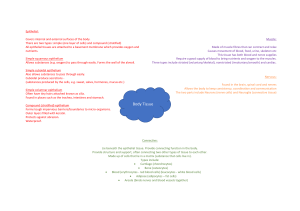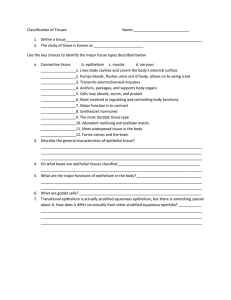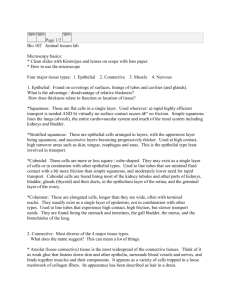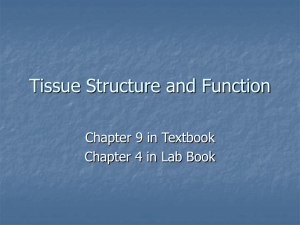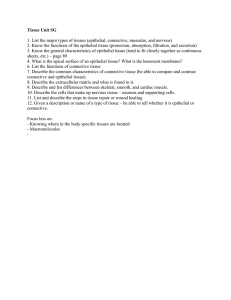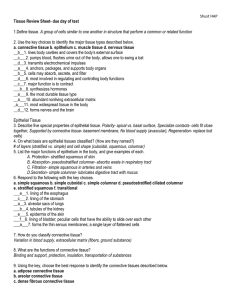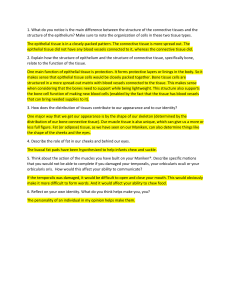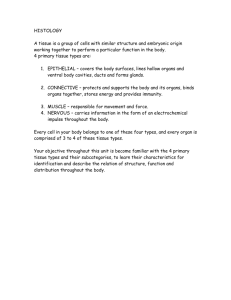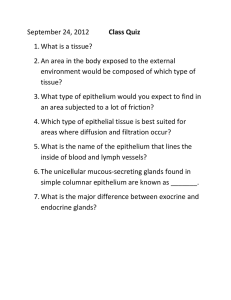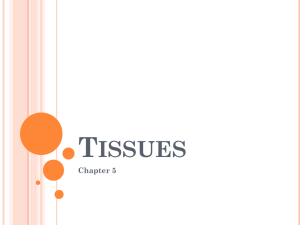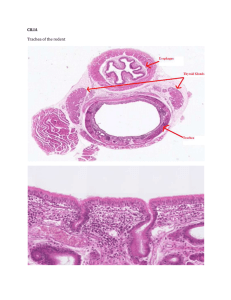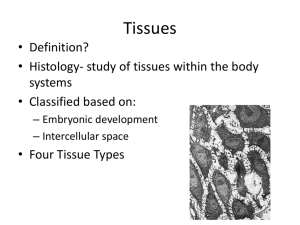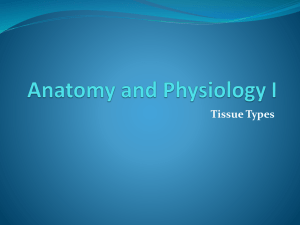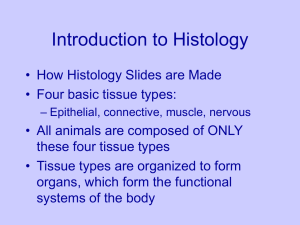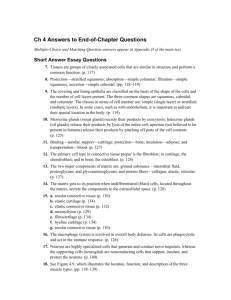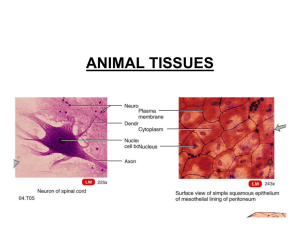chapter 4 quiz - Athens Academy
advertisement
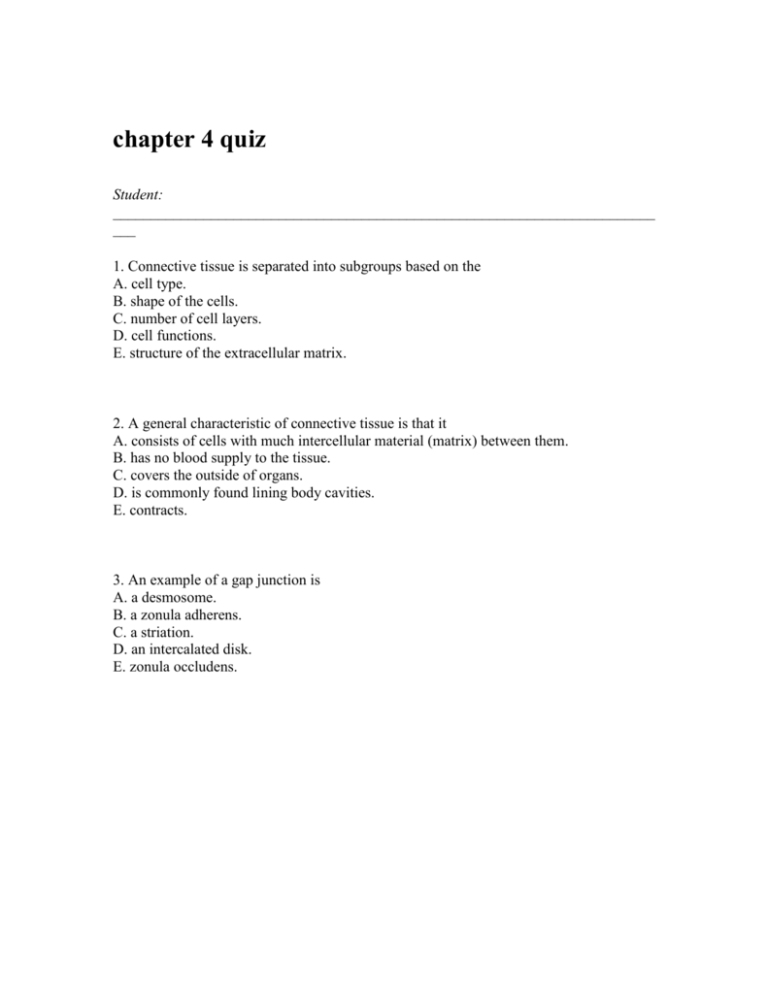
chapter 4 quiz Student: ________________________________________________________________________ ___ 1. Connective tissue is separated into subgroups based on the A. cell type. B. shape of the cells. C. number of cell layers. D. cell functions. E. structure of the extracellular matrix. 2. A general characteristic of connective tissue is that it A. consists of cells with much intercellular material (matrix) between them. B. has no blood supply to the tissue. C. covers the outside of organs. D. is commonly found lining body cavities. E. contracts. 3. An example of a gap junction is A. a desmosome. B. a zonula adherens. C. a striation. D. an intercalated disk. E. zonula occludens. 4. This is a picture of a skin wound. What does "D" represent? A. dermis B. subcutaneous fat C. epidermis D. blood vessel E. blood clot 5. If one of the functions of the capillaries is to supply body cells with oxygen and nutrients, you would expect the capillary walls to consist of A. connective tissue. B. keratinized epithelium. C. stratified squamous epithelium. D. simple columnar epithelium. E. simple squamous epithelium. 6. Dense regular collagenous connective tissue would be found in A. a nerve. B. the brain. C. a ligament. D. a skull bone. E. a lymph node. 7. Structures that function in intercellular communication are A. desmosomes. B. tight junctions. C. hemidesmosomes. D. gap junctions. E. centrioles. 8. Glands whose ducts have few branches are called A. simple. B. compound. C. acinar. D. alveolar. E. branchless. 9. This is a picture of a skin wound. What does "B" represent? A. dermis B. subcutaneous fat C. epidermis D. blood vessel E. blood clot 10. Which of the following characteristics is NOT consistent with simple squamous epithelial tissue? A. little extracellular material B. rest on a basement membrane C. has good blood supply within it D. the cells are thin and flat (not thick) E. acts as a permeability barrier 11. This exocrine gland uses exocytosis to secrete its product. A. merocrine B. apocrine C. holocrine D. endocrine E. solocrine 12. Epithelial tissue is distinguished from connective, muscular, or nervous tissue by its A. extracellular matrix. B. contractility. C. ability to carry action potentials. D. ability to serve as insulation. E. basement membrane. 13. A muscle that is not consciously controlled and has a banded appearance would be described as A. striated voluntary. B. striated involuntary. C. nonstriated voluntary. D. nonstriated involuntary. E. smooth voluntary. 14. Cartilage heals slowly after an injury because A. this tissue type is very complex. B. it contains so much proteoglycan. C. it has few, if any, blood vessels. D. it is a dead rather than a living tissue. E. it contains no fibroblasts. 15. Which of the following occurs when the permeability of blood vessels increases during inflammation? A. removal of foreign material from the blood B. increased blood flow to the area C. redness and heat at the injury site D. no change in osmotic balance between blood and tissues E. edema 16. A cell that forms fibrous connective tissue would be called a A. fibroclast. B. fibrocyte. C. fibroblast. D. fibroid. E. fibromast. 17. To determine that a type of epithelium is squamous, which of the following is most important? A. the number of cell layers B. the shape of most of the epithelial cells C. the shape of the most superficial epithelial cells D. the shape of the basal epithelial cells E. the shape of the basement membrane
